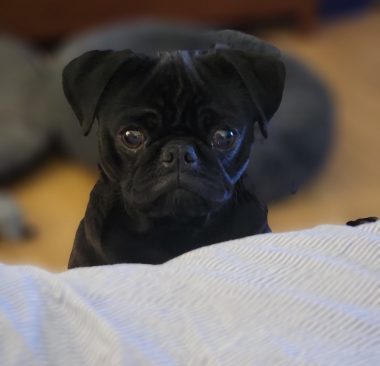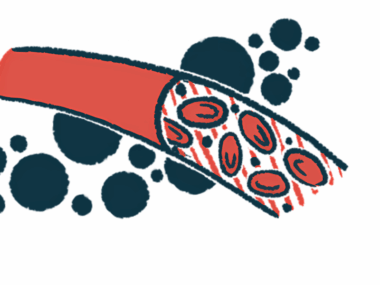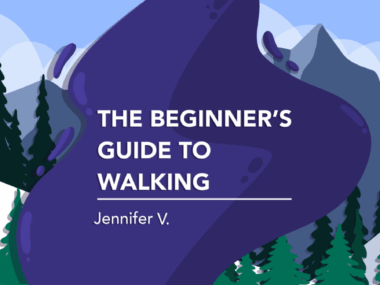My Struggles With Sleep Disorders as an NMO Patient
Written by |

Most nights, I can’t wait to go to bed. I’ll rush through my bedtime routine, but even though I’m beyond exhausted, I can’t seem to fall asleep.
It secretly irks me to be the only one in my household still awake at night. Even my pug, Magnus, who normally barks at the slightest sound, has already fallen into a deep sleep. The soothing rhythm of his snoring usually helps lull me to sleep, but when I’m lying awake for hours on end, I become a little resentful.

Jennifer’s precious pug, Sir Magnus. (Photo by Jennifer van Amerom)
My husband, Mike, is used to seeing the blue hue of my phone screen at odd hours of the night. This is our normal. Sometimes I’ll work, schedule text messages to friends, read news articles, practice my Spanish, or watch Netflix. I’ll even journal through my frustration.
Sleep disorders and NMO
While I’ve always been more of a night owl, I didn’t start suffering from insomnia until after I was diagnosed with neuromyelitis optica (NMO). Insomnia is a sleep disorder that makes it difficult to fall and stay asleep.
On my most challenging days, my insomnia is paired with symptomatic narcolepsy. The Mayo Clinic describes narcolepsy as a “chronic sleep disorder characterized by overwhelming daytime drowsiness and sudden attacks of sleep.” The disorder is considered symptomatic when it’s associated with a significant underlying neurological disorder.
Some reports list symptomatic narcolepsy as one of the diagnostic criteria for NMO spectrum disorders, but I didn’t have any sleep challenges until after my first major attack.
My insomnia was initially caused by pain, which was often so overwhelming that it woke me up. Insomnia can also result from my medication cocktail. Just when I think my body has adjusted to my current meds, they stop working. Then I must work with my medical team to find new dosages and new medications, and stop taking meds that aren’t helping much. This cocktail is tough on my system, and even tougher on the quality of my sleep.
According to the U.S. Centers for Disease Control and Prevention, adults require seven or more hours of sleep per 24-hour cycle. As a patient, I’m thrilled if I get four hours of uninterrupted sleep now.
Fatigue and NMO
I know I’m not alone in suffering through the night, but daytime can also be difficult due to fatigue. According to a survey by the Autoimmune Association, fatigue is the primary concern for most patients with autoimmune disorders.
Many NMO patients suffer from hypersomnia, which refers to excessive daytime sleepiness or excessive time spent sleeping. Hypersomnia sufferers often struggle with fatigue, have trouble staying awake during the day, and may fall asleep at any given moment.
I like to stay busy — that’s just how my brain works. But there are times when hypersomnia strikes, and I can barely function. In those moments, I’m grateful for my husband, who sees the fatigue kick in before I’m ready to admit it. While I dislike making him my caregiver, I’m secretly grateful when he sends me to bed. I have fallen asleep sitting up more times than I can count, but I’m always somewhere safe, and that’s what matters most.
There are medications that can offset fatigue, and others that help patients to fall and stay asleep. I am on both, creating a cycle of ups and downs. Pairing my cocktail with essential oils, a healthy bedtime routine, and regular exercise also helps me to get better sleep. It isn’t a perfect system, but it works for now.
Do you struggle with sleep disorders or fatigue? Please share your experience in the comments below.
Note: Neuromyelitis News is strictly a news and information website about the disease. It does not provide medical advice, diagnosis, or treatment. This content is not intended to be a substitute for professional medical advice, diagnosis, or treatment. Always seek the advice of your physician or other qualified health providers with any questions you may have regarding a medical condition. Never disregard professional medical advice or delay in seeking it because of something you have read on this website. The opinions expressed in this column are not those of Neuromyelitis News, or its parent company, Bionews, and are intended to spark discussion about issues pertaining to neuromyelitis optica spectrum disorder (NMOSD).







Tracy lee
diagnosed in July of 2020 with nmo everything happened so fast I didn't have time to process it still struggling with it but accept that this is my new normal. I've struggled with insomnia from time to time but these couple of days have been the worse I've had since being diagnosed.
Jennifer V.
Thanks for your comment, Tracy. I'm sorry you have NMO but I'm grateful to hear that you know your diagnosis. I hope your sleep issues resolve soon and don't become part of your new normal.